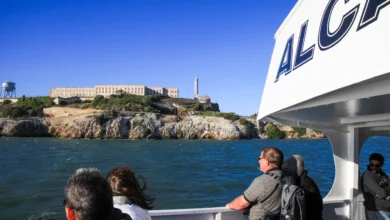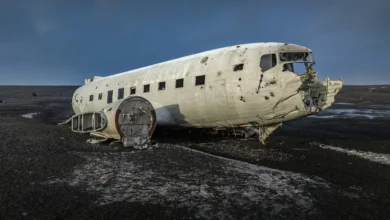The Bible has been a spiritual guide, historical document, and cultural touchstone to billions of people around the world for millennia. The Bible is filled with tales of prophets and kings who shaped civilisations. While their deeds are preserved in scriptures, their faces – their humanity – have long since been lost to the passage of time.
It was all good until now.
In the four-part “Lost Faces of the Bible documentary series, an international team of forensic anthropologists and artists embarked on a mission to reconstruct the faces of people who lived in the Biblical period. This team uses ancient skulls found in archaeological digs throughout the Middle East to combine traditional forensic techniques with cutting-edge facial reconstruction and 3D imaging.
The results are nothing less than breathtaking. They are not just bones that were dug up from the desert; these are real people who have been reanimated in startling clarity. They breathed, lived, loved, fought and worshipped – now they have faces.

A New Kind Of Biblical Archaeology
The search for scrolls, artifacts, and cities has dominated biblical archaeology. The “Lost Faces of the Bible”, however, flips the script. It focuses not only on scriptures or structures, but also on humans – individuals who may have walked the streets of Jericho in ancient times or worshipped under the shadow of Solomon’s Temple.
Each episode focuses on a single ancient skull excavated at a historical site in the Middle East. The documentary does not just tell you about these people; it also shows them. Skulls can be transformed into three-dimensional, lifelike portraits using forensic reconstruction. It’s more than just science. It’s also about identity, culture and seeing people in the Bible as real men, women with emotions and personal histories.
Who were the people behind the bones?
Each of the four people featured in the series represents an aspect of Biblical life — from a warrior to a villager, or devoted believer to enigmatic outsider. The skulls do not belong to any known Biblical characters such as Moses or Mary. However, they all help paint a vivid picture of the diverse populations who lived in the Holy Land thousands of years ago.
Explore the stories and geographies behind these fascinating reconstructions.
1. The Man From Jericho (Episode 1)
Archaeologists have discovered a skull that is estimated to be more than 6,000 years old in Jericho, located in the Jordan Valley on the West Bank. The Jericho that existed at the time of this man predates Joshua’s conquest in the Bible, but it provides a foundation for understanding early city life.
The cranial examination is used by forensic experts to determine a person’s age and sex. They also look at his diet, as well as the possible cause of his death. Face sculptors begin the process of carving a skull with this information. What is the result? The result?
This reconstruction is made even more powerful by its location – Jericho, a place where legend and history are intertwined. He may not have met the Bible characters, but he helped pave the way for their arrival. He farmed on the same fertile land, walked over the same hills, and saw the same sun rise in the Judean desert.
2. The Woman From Megiddo, Episode Two
The second episode takes place in the north, at Megiddo. This site plays an important role both in history and prophecy. Megiddo, located in Israel’s modern-day near Haifa, is a strategic site that has been the scene of many battles. So many that it is better known as Armageddon.
Archaeologists found the remains of an ancient woman who was buried in a manner that indicated her high social status. Her skull shows signs of cranial distortion, a common practice in ancient cultures among the elite classes. This suggests she was part of a noble family or priestly lineage.
The woman’s face is revealed through meticulous modelling – youthful, elegant and refined. Her life may have been luxurious, but it ended prematurely, as did many others. Her reconstruction brings the forgotten women of antiquity to life, not only as mothers and wives, but also as leaders, thinkers and keepers of culture.

3. The Man From Lachish (Episode three)
Lachish was located in southern Israel and was a major fortified city in the Kingdom. In the third episode, we visit this city, which was devastated by the Assyrians during King Hezekiah’s reign.
Archaeologists discovered the remains of an 8th-century BCE man who had died violently. This may have happened during Sennacherib’s siege of Lachish. His skull shows signs of trauma, which is consistent with a violent death. This could have happened in battle or during an invasion.
His reconstructed facial features are powerful, battle-hardened, and rugged, with haunted, war-torn eyes. He could have been a soldier, a farmer-turned-defender, or simply a man caught in the storm of empires clashing.
The series, by giving him a new face, does more than just reconstruct an individual. It resurrects the lost generation of people who lived and died defending their homelands from ancient superpowers.
4. The Mystery Man from Dead Sea (Episode 4)
The final episode is more mysterious. A skull is discovered in caves located near the Dead Sea and not far from Qumran, where the Dead Sea Scrolls were found. The remains date from the first century CE. This was a period of great social, political and religious turmoil in Judea.
Was he a Jew from the Essene sect, one of the most radical and desert-dwelling Jewish groups that produced the scrolls? A Roman sympathiser? Traveller or rebel? His bones are not very informative, but modern technology is revealing much more.
His skull is reproduced with great precision through CT scans, 3D printing and other methods. Slowly, layer-by-layer, his face is revealed — and speculations about who this man might have been. He may have lived at the same time as Jesus Christ, John the Baptist or Pontius Pilate. He could have seen events that forever changed the world.
The unanswered question is what makes this image so powerful. This face makes us confront the unanswered questions of history. It reminds us that, for every name in scripture, there are thousands of lives left unsaid.
Tradition meets technology
This series is a fascinating intersection of cutting-edge technology and timeless storytelling. The art of forensic facial reconstruction requires a delicate balance between empirical knowledge and artistic instinct. The process begins by scanning or casting the head, then applying tissue-depth markers according to age, gender, and ethnicity. Then, the muscles, skin and facial features are sculpted – sometimes digitally, other times by hand.
It’s not all about the bones. Researchers use ancient texts, regional artwork, and cultural records to educate themselves about hair, eye colour and skin tone. Each detail is based on historical context. This results in faces that not only look anatomically plausible, but also culturally authentic.
Geography of the Bible – A Living Map
The Lost Faces of the Bible has a deep respect for geography. The land becomes a character, a witness to thousands of years’ worth of conflict, faith, and transformation. Each landscape, from the verdant hills near the Dead Sea to the arid rocks of Galilee, adds meaning and depth to the stories that are being unearthed.
The ancient Near East is a mosaic of peoples – Canaanites and Hebrews, Philistines and Babylonians, Greeks and Romans – who all left their mark on the land. This series allows us to visualise the mosaic by connecting faces with places that we have read about for our entire lives.

Why These Faces Matter
The reconstructed images of Biblical faces force us to stop and think in a world flooded with digital images. To understand people behind the text, you must first realise that history isn’t just about kings or prophets. It is about ordinary lives. The mother at Megiddo. The warrior at Lachish. The elder of Jericho
These faces remind us that the Bible is more than a collection of moral lessons and divine commands — it’s an account of real human experience, shaped geographically, culturally, and over time.
By giving these people a face, “Lost Faces of the Bible” restores an intimacy and sense of empathy that is often lost in scholarly discussions. It bridges the past and present and reminds us that humanity’s story is still ongoing.
Final Reflexions: When Bones Speak
The Lost Faces of the Bible Series achieves something that few documentaries can: It combines rigorous scientific curiosity with artistic beauty, archaeological precision with archaeological accuracy. It’s more than just looking back. It’s about connecting with a past that transcends religions, borders and time.
They are not just faces that have been lost. These are our
faces — our ancestors, our forerunners, our mirrors. They remind us of the fact that, beneath the layers and cultures of history, religion, and culture, there is something eternal: the human tale.




